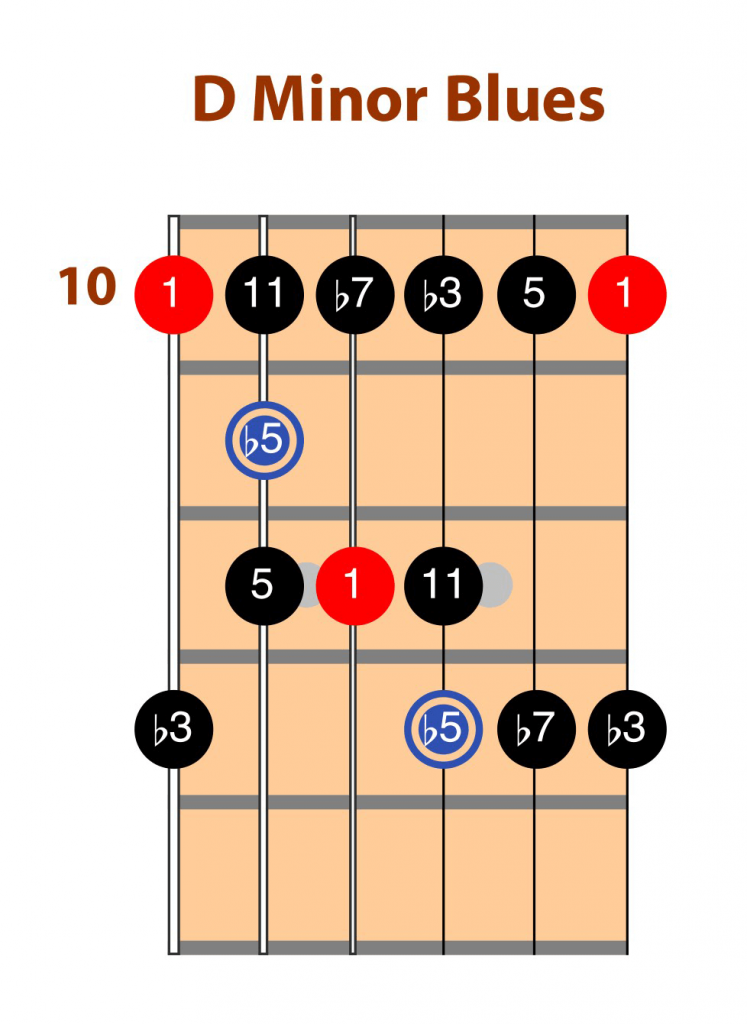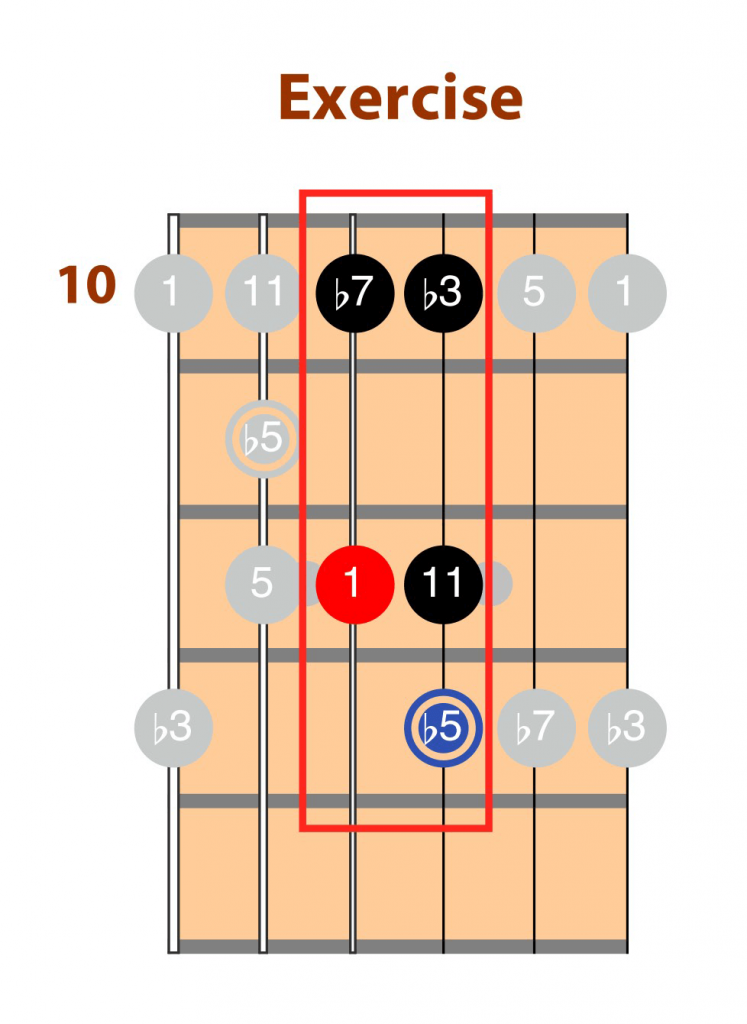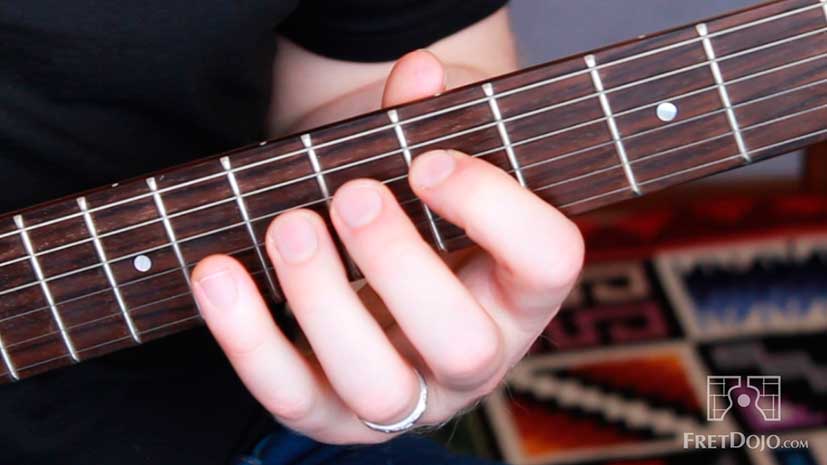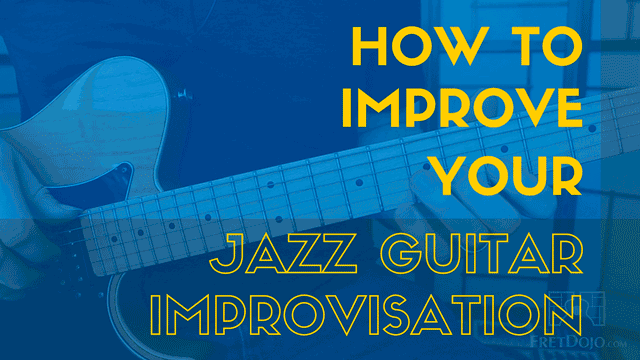► Get your FREE PDF Worksheet for this lesson here: https://www.fretdojo.com/pdf/
► Start Your FretDojo Academy Membership Here: https://www.fretdojo.com/signup-offer
There’s a bit of a trap that you can fall into learning this dark art of jazz (and especially jazz guitar).
The feeling that you need to know everything about jazz…to be able to play jazz.
Think about this:
There’s an often-used analogy of learning jazz like it’s a spoken language, I.e. a form of music which is spontaneously ‘spoken’ rather than reading something already written down.
The logic would imply:
You have to be a ‘fluent speaker’ in the language to be able to hold a decent ‘conversation’.
But:
This isn’t quite how learning jazz works – it’s a good example of where this ‘language’ analogy can get the aspiring jazz guitarist astray.
Here’s the truth:
You don’t need to know that much at all really to pull off a great sounding jazz solo.
“Whaaat? How is that even possible?” you shout, gesticulating your arms wildly at me.
Let’s go further…
In fact, it’s very likely you could make a great sounding jazz solo today, with where you are at already.
Possible? Definitely.
Let me explain. Here’s one of the most useful things ever said to me about jazz playing, by the legendary guitarist Carl Orr:
“Don’t always project into the future. How can I make great music RIGHT NOW, using what I know already?” ~ Carl Orr
Wow. That is profound.
And importantly, approaching jazz in this way will help you to think more as an artist, rather than a just a ‘student’.
Instead of constantly yearning for that ‘special day’ sometime in the distant future when you’ll have enough scales, licks, and 1000 memorized transcriptions under your belt so you’ll feel ‘worthy’ enough to go to a jam session….
Make some good music RIGHT NOW.
Today.
“How?” You might ask (especially if you’re a rank beginner). ‘I can’t even follow the chords in a chart at all yet when I try to solo!’
The answer:
Even if you’re a rank beginner, you still have no excuse.
Here’s a simple exercise to demonstrate.
Step 1:
Take this basic box position pentatonic scale in Dm:

Now 99 percent of guitarists regardless of what style you play would probably know this. If you don’t, take a moment to learn the pattern.
Step 2:
Isolate just TWO of the strings in this pattern. That makes the pattern this:

Why just two strings? You’ll realize why in a minute.
Step 3:
Now fire up the backing track and play this 2 string ‘micro’ scale over the backing track below:
Step 4:
Now start improvising over the backing track, using the 2 string scale.
Try different rhythms, slide into the notes, try different patterns and phrase lengths. Start at different points in the bar. Do anything you like. Experiment!
BUT – the rule if you’re ONLY allowed to use the two strings I’ve highlighted.
Give this a try RIGHT NOW. Grab your guitar and put on the backing track…
Hint: An example of me doing this can be found on the video version of this post that’s at the top of the page.
Hey presto! As you can see, you can make a pretty good sounding jazz solo out of just 5 notes from a scale you probably know like the back of your hand.
In fact, Kenny Burrel uses little more than pentatonic and blues scales on his classic recording Chitlins Con Carne from Midnight Blue (and this happens to be one of the highest selling jazz albums of all time):
Why This Approach Works
The above exercise highlights something very important:
The size of your jazz vocabulary isn’t the most important thing…It’s how you use it that counts!
Even the most accomplished jazz players often just stick to a few key ideas in their soloing. They might have garnered inspiration from many sources, but they play to their strengths first and foremost.
Examples:
Pat Martino bases a great deal of his soloing on some strong double time lines and the minor conversion concept.
Wes Montgomery had his signature ‘three tiered’ soloing approach of single lines, his famous octave technique, and chord soloing, that features on the majority of his most well-known recordings.
Any great player you study tended to develop their unique sound out of a concise and well-defined set of ideas.
In Summary…
Placing limits on the material you use, and going very deep on that limited material, will quickly open the doorway to building your jazz skills.
Reasons:
1. You’ll learn material more deeply, rather than just ‘skimming the surface’ of a lot of ideas
2. You’ll be able to recall the material you do learn far more easily
3. You’ll learn how to be more creative with the material that you’ve learnt.
Go deep on vocabulary rather than broad.
You don’t need to know much vocabulary. You just need to know a few concepts really, really well.
Don’t get me wrong:
Do your study and get inspiration from a lot of players and transcriptions of their music.
But never forget that at every step of the way:
The priority Is to make great music RIGHT NOW – with what you have already.
Now over to you:
What are YOUR thoughts on this topic? What did you think of this article? Leave your comments below…
A special thanks to Carl Orr for his deep insights on this topic – find out more about Carl at https://www.carlorr.com/
Peace,
Greg O’Rourke
Founder, Fret Dojo
Innovation in Online Jazz Guitar Education


Hi Greg …. great lesson …. you make it easy to start doing some soloing …. how do you decide the starting note ? is the 1 the scale you are in or being pentatonic can you use it across a number of scales? how do you decide? there’s probably some theory here around the cycle of 5ths that may help me make these decisions.
In this case the progression was based on Summertime which is mainly around the key of Dm. So I based the pattern on a D Minor Blues scale which fits the whole song pretty well in this case. Of course with more complex progressions e.g. All The Things You Are you will need to change the key throughout the progression, but I think this exercise is a good starting point to get the creative juices flowing without worrying too much about navigating the changes.
Thanks for the great ideas.
I really like your ideals, it fresh to hear (read) a teacher say, start NOW! with what
you know already, instead of trying to get you to do something you’re not use to and have to learn, I like that I can build from what I know and move forward Thanks
Wow! Such simple idea. Yet, I’m moving forward, and accomplishing things that I didn’t think would be possible in such a short time!
Thank You,
Mike Gildea